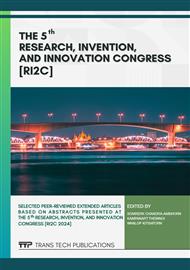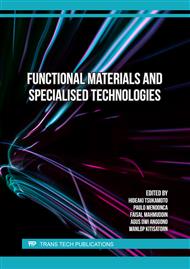p.3
p.11
p.17
p.23
p.33
p.39
p.47
p.55
Extraction and Characteristics of Melanin from Black Soldier Fly (BSF) Pupal Skin as Biopolymer Raw Material
Abstract:
The generation of organic waste has increased globally in recent years. One way to degrade waste more quickly and carry out the bioconversion process of organic waste is to use insects. This BSF has attracted researchers to cultivate and utilize this biomass to extract biochemicals. However, in this research, pupal skin melanin (PSM) from BSF waste is used to obtain melanin. Melanin is a group of blackish-brown pigments with strong physical, chemical, and antimicrobial properties. These properties can be used as an alternative biopolymer material for various environmental sustainability purposes. The melanin extraction method consists of three main steps, namely demineralization, deproteination, and deacetylation, which will be compared with the results of melanin purification from Sepia officinalis melanin (SOM). Characteristics using FTIR, SEM, and EDS to determine the comparison of the quality of melanin obtained from the extraction of pupal skin with commercial melanin from Sepia officinalis. The research results obtained from FTIR analysis show that there are distinctive peaks that correspond to the structure of melanin, including hydroxyl groups (-OH), amine groups (-NH), carboxyl groups (-COOH), and aromatic groups. For SEM analysis, the morphology of PSM and SOM shows differences in surface condition. The melanin resulting from Sepia officinalis is not homogeneous and contains many lumps or aggregates. Whereas the surface of melanin from pupal skin is more homogeneous or looks smoother, but there are still small aggregates on the surface. Furthermore, from the EDS analysis, the total pure concentration was 99.33% for SOM and 69.78% for PSM.
Info:
Periodical:
Pages:
3-10
Citation:
Online since:
December 2024
Keywords:
Price:
Сopyright:
© 2024 Trans Tech Publications Ltd. All Rights Reserved
Share:
Citation:



